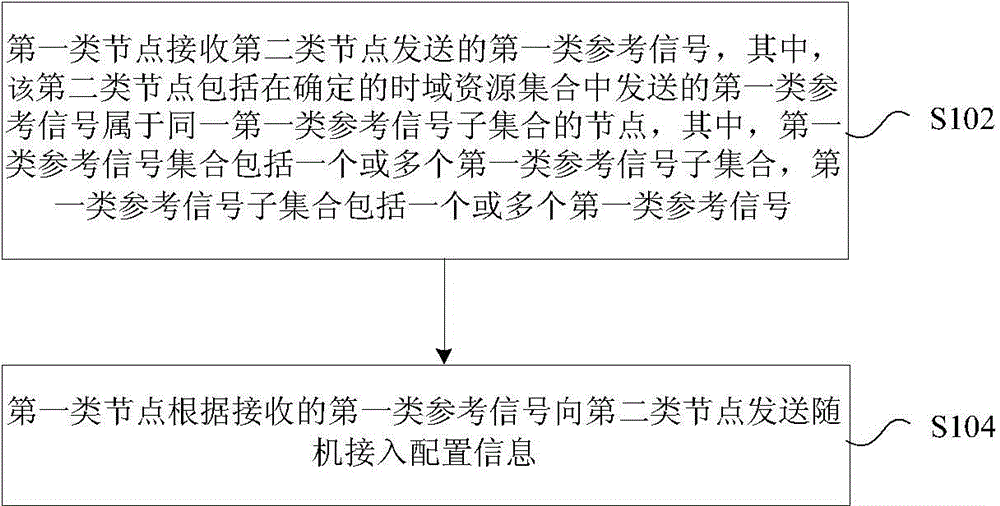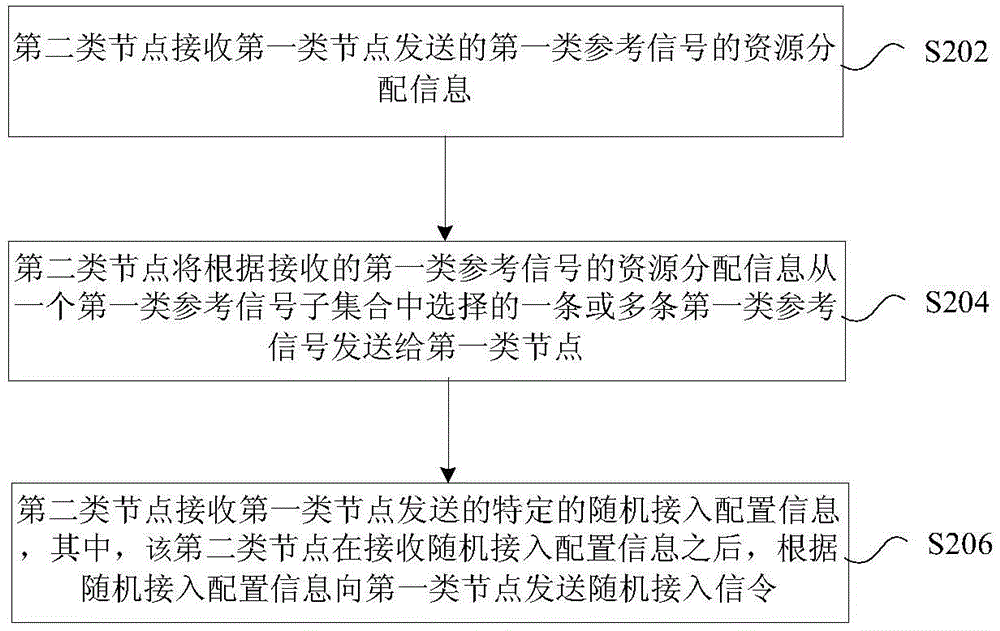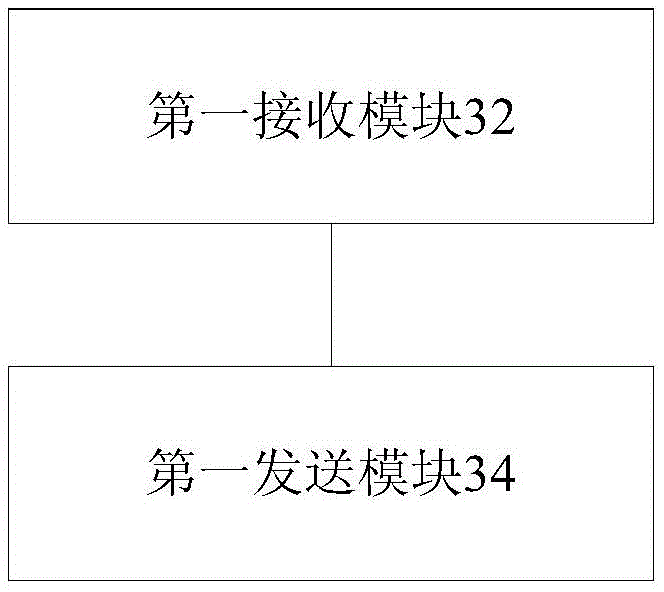Method and device for sending and receiving random access configuration information
A random access channel, random access technology, applied in the field of communication, can solve the problem of huge system resource overhead
- Summary
- Abstract
- Description
- Claims
- Application Information
AI Technical Summary
Problems solved by technology
Method used
Image
Examples
Embodiment 1
[0185] Nodes and terminals (User Equipment, UE for short) exist in the wireless system.
[0186] The node may be at least one of the following: a macro base station (Macrocell), a micro base station (Microcell), a pico base station (Picocell), a femto base station (Femtocell), a home base station, a low power node (LPN), and a relay station (Relay).
[0187] The terminal can be at least one of the following:
[0188] One or more human-to-human (HumantoHuman, H2H) communication terminals;
[0189] One or more machine-to-machine (M2M) communication terminals;
[0190] One or more device-to-device (D2D) communication terminals;
[0191] step 1:
[0192] In this embodiment, it is assumed that there are terminals UE1, UE2, UE3, UE4, UE5, and UE6. In order to access the wireless system, these UEs first send a reference signal to a node (denoted as NodeA) in the system. The reference signal is a or multiple orthogonal sequences, or one or multiple quasi-orthogonal sequences, or o...
Embodiment 2
[0223] In a wireless system there are nodes and terminals.
[0224] step 1:
[0225] In this embodiment, it is assumed that there are terminals UE1, UE2, UE3, UE4, UE5, and UE6. In order to access the wireless system, these UEs first send a reference signal to a node (denoted as NodeA) in the system. The reference signal is multiple Orthogonal sequence. The NodeA notifies the UE of the indexes that can be used as reference signals. In this embodiment, it is assumed that sequence 1 to sequence 10 are used as reference signals available to the UE.
[0226] Each of UE1~UE6 randomly selects a sequence from sequence 1~sequence 10 as a reference signal, and sends the reference signal on the time-frequency resource indicated by NodeA. The location of the time-frequency resource is as follows: Figure 11 as shown, Figure 11 is a schematic diagram of the second random access resource allocation according to an embodiment of the present invention, as shown in Figure 11 As shown, B...
Embodiment 3
[0264] In a wireless system there are nodes and terminals.
[0265] step 1:
[0266] In this embodiment, it is assumed that there are terminals UE1, UE2, UE3, UE4, UE5, and UE6. In order to access the wireless system, these UEs first send a reference signal to a node (denoted as NodeA) in the system. The reference signal is multiple Orthogonal sequence. The NodeA notifies the UE of the indexes that can be used as reference signals. In this embodiment, it is assumed that sequence 1 to sequence 10 are used as reference signals available to the UE.
[0267]Each of UE1~UE6 randomly selects multiple sequences from sequence 1~sequence 10 as reference signals, and sends reference signals on the time-frequency resources indicated by NodeA. The location of the time-frequency resources is as follows: Figure 12 as shown, Figure 12 is a schematic diagram of the third random access resource allocation according to an embodiment of the present invention, as shown in Figure 12 As show...
PUM
 Login to View More
Login to View More Abstract
Description
Claims
Application Information
 Login to View More
Login to View More - R&D
- Intellectual Property
- Life Sciences
- Materials
- Tech Scout
- Unparalleled Data Quality
- Higher Quality Content
- 60% Fewer Hallucinations
Browse by: Latest US Patents, China's latest patents, Technical Efficacy Thesaurus, Application Domain, Technology Topic, Popular Technical Reports.
© 2025 PatSnap. All rights reserved.Legal|Privacy policy|Modern Slavery Act Transparency Statement|Sitemap|About US| Contact US: help@patsnap.com



